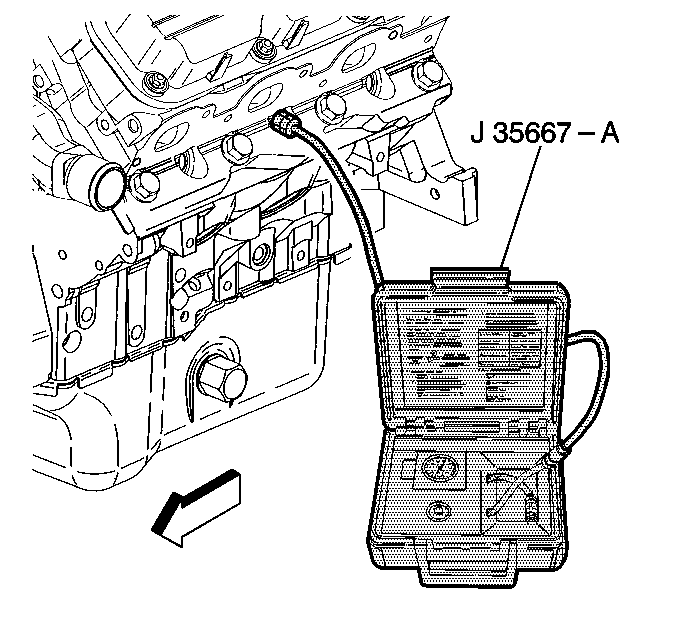Special Tools
J 35667-A Cylinder Head Leakdown Tester
For equivalent regional tools, refer to
Special Tools.
With the use of air pressure, a cylinder leakage test will aid in the diagnosis. The cylinder leakage test may be used in conjunction with the engine compression test, to isolate the cause of leaking cylinders.
Warning: Refer to Battery Disconnect Warning in the Preface section.
- Remove the battery ground - negative cable.
- Remove the spark plugs. Refer to
Spark Plug Replacement.
- Install the
J 35667-A tester
.

- Measure each cylinder on the compression stroke, with both valves closed.
Note: It may be necessary to hold the crankshaft balancer bolt, to prevent piston movement.
- Apply air pressure, using the
J 35667-A tester
. Refer to the manufacturer's instructions.
- Record the cylinder leakage readings for each cylinder.
Note:
| • | Normal cylinder leakage is from 12-18 percent. |
| • | Make a note of any cylinder with more leakage than the other cylinders. |
| • | Any cylinder with 30 percent leakage or more requires service. |
- Inspect the four primary areas, to properly diagnose a leaking cylinder.
- If air is heard from the intake or exhaust system, perform the following procedure:
| • | Remove the valve rocker arm cover of the suspect cylinder head. |
| - | Ensure that both valves are closed. |
| - | Inspect the cylinder head for a broken valve spring. |
- If air is heard from the crankcase system at the crankcase, oil filler tube, perform the following procedure:
| • | Remove the piston from the suspect cylinder. |
- If bubbles are found in the radiator, perform the following procedure:
- Remove the
J 35667-A tester
.
- Install the spark plugs. Refer to
Spark Plug Replacement.
- Install the battery ground - negative cable.

